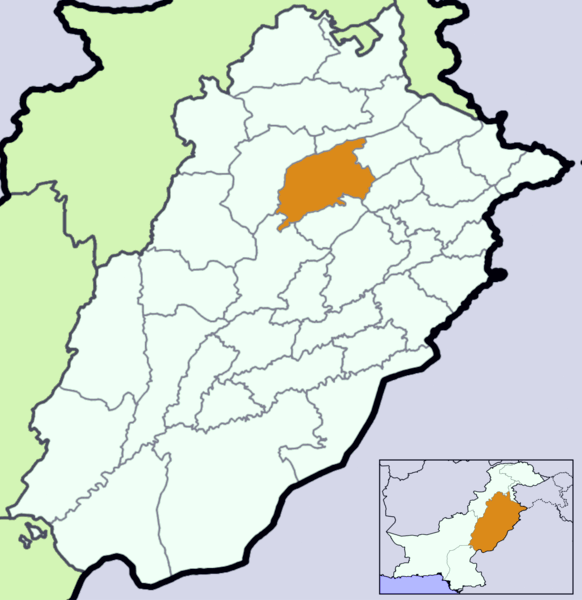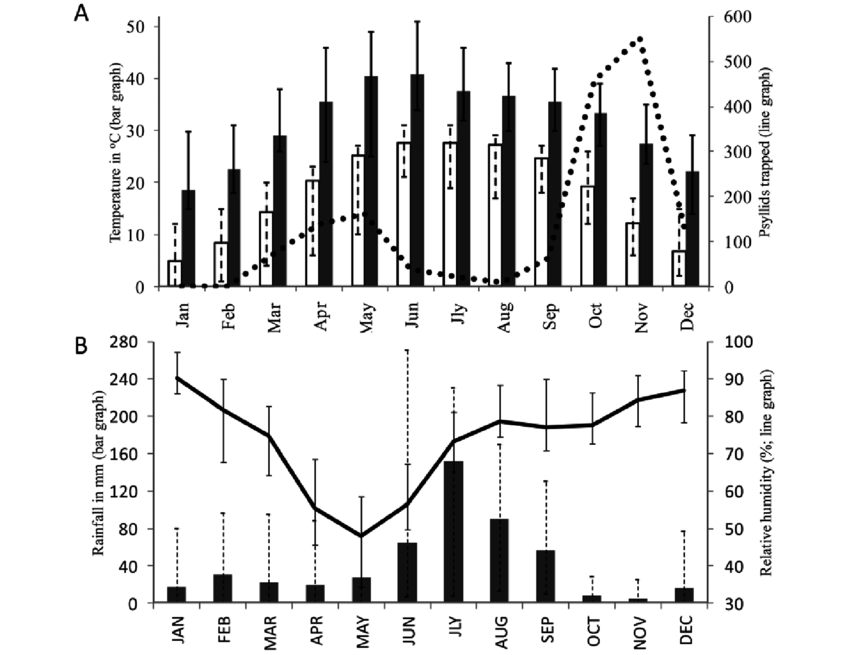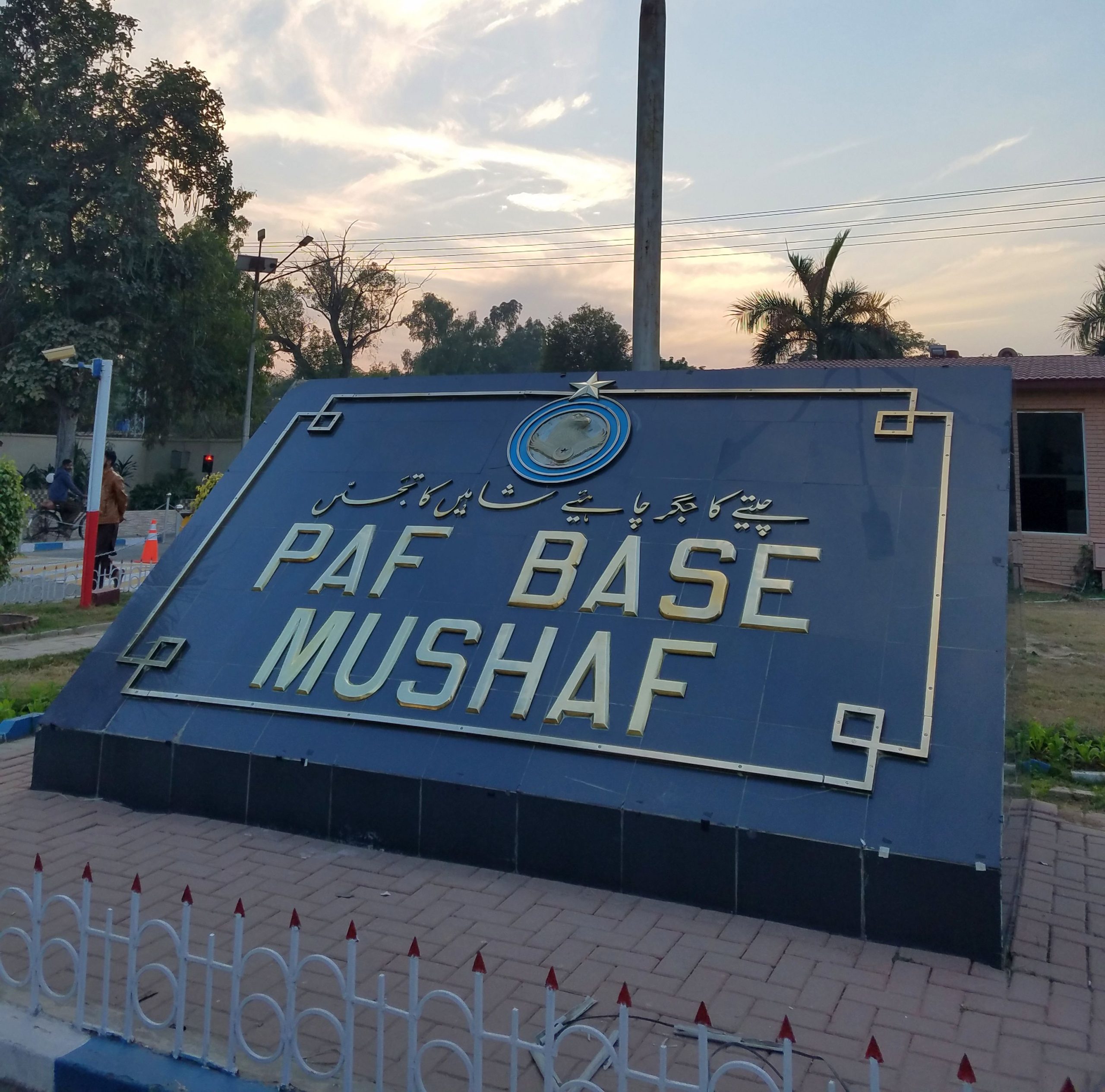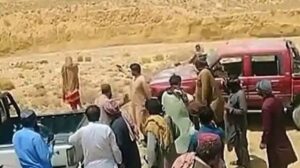Distinguished as one of the meticulously planned cities in Pakistan, alongside counterparts like Faisalabad, Islamabad, and Gwadar, Sargodha radiates vitality and dynamism. Its strategic location makes it a pivotal hub for grain and cash crop trading, intricately connected by roads to Lahore and Miānwāli, and by rail to Faisalābād (formerly Lyallpur) and Lahore. The city pulsates with industrial activity, hosting textile mills, hosiery factories, flour and oilseed mills, cotton gins, and chemical and soap manufacturing units.
Founded in 1903 as the headquarters of the Lower Jhelum Canal colony, Sargodha has evolved into a bustling metropolis, steeped in cultural heritage and economic significance. Its name, “Sargodha,” is steeped in history, with origins tracing back to the Sanskrit term “svargadhama,” meaning “divine abode,” or possibly derived from the presence of a lake where a Hindu resident named “Godha” resided. Despite the varied theories, Sargodha remains a beacon of harmony and coexistence.
Situated just an hour and thirty-three minutes away from Faisalabad, the textile hub of Pakistan, Sargodha pulsates with the rhythm of Punjabi culture, known for its peace-loving and tolerant populace. In this city, diversity thrives, with Muslims, Christians, and Hindus coexisting harmoniously, a testament to Pakistan’s unity in diversity.
Since its inception, Sargodha has stood as a shining example of communal harmony, where strife based on religion or ethnicity finds no foothold. As the sands of time continue to shape its destiny, Sargodha stands tall, a symbol of resilience, progress, and inclusivity in the tapestry of Pakistan’s urban landscape.
History
Sargodha traces its origins back to 1903 when it was established by the British as a canal-colony, initially spelled as Sargoda. Despite its humble beginnings, the city faced adversity early on, grappling with a severe outbreak of the bubonic plague in 1903, followed by a milder one in 1904. However, its strategic significance did not go unnoticed, prompting the British Royal Air Force to construct an airport, recognizing the potential of its location.
The name “Sargodha” finds its roots in the amalgamation of “Sar” from “sarowar,” signifying “pond,” and “Godha,” meaning “Sadhu,” translating to “Pond of Godha.” Lady Trooper, under the guidance of Sir Charles Montgomery Rivaz KCSI, a notable colonial administrator and Lieutenant-Governor of the Punjab from 1902 to 1907, played a pivotal role in the city’s founding.
Designated as the District Headquarters in 1940, Sargodha ascended to the status of Divisional Headquarters in 1960, marking a significant milestone in its administrative evolution. From its modest beginnings as a canal-colony to its elevation as a vital administrative center, Sargodha’s journey is a testament to resilience, adaptation, and progress.
Geography, Topography, and Climate Overview
Situated in the heart of the Pakistani province of Punjab, Sargodha commands a strategic location that positions it in proximity to several major cities of the country. A glance at its geographical coordinates relative to key urban centers highlights its significance:
- 1,202 km (747 mi) North of Karachi
- 187 km (116 mi) West of Lahore
- 241 km (150 mi) South of Islamabad
- 91 km (57 mi) North-West of Faisalabad
- 223 km (139 mi) South of Rawalpindi
Nestled 187 kilometers (116 mi) northwest of Lahore within the confines of Sargodha District, the city lies in close proximity to the M-2 motorway, facilitating swift connectivity to Lahore and Islamabad. The M-2 motorway, with several interchanges strategically placed, serves as a vital artery linking Sargodha to the bustling metropolises of Lahore and Islamabad.
Sargodha’s geographical landscape predominantly comprises expansive, fertile plains, accentuated by occasional small hills along the Sargodha-Faisalabad Road. The western and northern peripheries are bordered by the meandering River Jhelum, while the eastern flank is embraced by the tranquil waters of the River Chenab. At an elevation of 190 meters above sea level, Sargodha offers a picturesque setting amidst its flat plains and riverine borders.
Climate-wise, Sargodha experiences extremes, with scorching summers marked by temperatures soaring up to 50 °C (122 °F) and relatively mild winters witnessing temperatures plummeting to freezing points. This climatic dichotomy underscores the city’s resilience in adapting to diverse weather patterns, shaping its socio-economic fabric and lifestyle. Check the climate graph of Sargodha.
Demographic Trends
Sargodha’s population trajectory reflects a compelling narrative of growth and urbanization over the decades. Delving into historical census data unveils a remarkable surge in population figures:
- In 1941, the population stood at a modest 36,000.
- By 1951, it surged to 78,000, marking a notable increase of 116.7%.
- The momentum continued into the 1960s, with the population reaching 130,000 by 1961, representing a 66.7% growth.
- By 1972, the population crossed the 200,000 mark, marking a 53.8% increase from the previous decade.
- The 1981 census recorded a population of 291,000, reflecting a substantial growth rate of 45.5%.
- The 1998 census marked a significant milestone, with the population soaring to 458,440, indicating a robust growth rate of 57.5%.
According to the latest available data from the 2017 Census of Pakistan, Sargodha experienced a dramatic population surge, with the city’s population reaching 872,557, showcasing a staggering increase of 90.3% since 1998. The metropolitan area, encompassing the City District, witnessed an even more pronounced rise, with a population of 3,903,588, of which approximately 1 million comprise the urban population.
The broader Sargodha Division, as per the 2017 census, recorded a population of 8,181,499, underscoring the city’s pivotal role as a demographic hub within the region.
In terms of language, Punjabi with Shahpuri dialect predominates among the city’s inhabitants, reflecting the rich linguistic and cultural tapestry that defines Sargodha’s vibrant community. As urbanization and economic opportunities continue to shape the city’s landscape, Sargodha stands poised at the nexus of growth, diversity, and dynamism.
| Historical Population | ||
| Year | Population | ±% Population Per Annum |
| 1951 | 893,269 | — |
| 1961 | 1,107,226 | +2.17% |
| 1972 | 1,557,641 | +3.15% |
| 1981 | 1,911,849 | +2.30% |
| 1998 | 2,665,979 | +1.98% |
| 2017 | 3,696,212 | +1.73% |
| 2023 | 4,334,448 | +2.69% |
| Sources: Wikipedia | ||
Sargodha District comprises seven tehsils, housing a combined total of 161 union councils. The below list shows the population of each of the seven tehsils of Sargodha district according to the 2017 Census of Pakistan along with area:
| Tehsil | Population (2017 Census) | Area km2 (sqmi) |
| Sargodha | 1,535,152 | 1,455 (561.8) |
| Kot Momin Tehsil | 451,978 | 891 (344.0) |
| Bhalwal Tehsil | 456,206 | 557 (215.1) |
| Shahpur | 353,325 | 787 (303.9) |
| Silanwali | 344,487 | 610 (235.5) |
| Sahiwal | 340,695 | 759 (293.1) |
| Bhera Tehsil | 314,369 | 722 (278.8) |
Religious groups in Sargodha City (1911−2017)
| Religious group | 1911 | 1921 | 1931 | 1941 | 2017 | |||||
| Pop. | % | Pop. | % | Pop. | % | Pop. | % | Pop. | % | |
| Islam | 4,064 | 45.93% | 6,967 | 39.3% | 9,146 | 34.18% | 12,060 | 33.11% | 623,293 | 94.7% |
| Hinduism | 3,563 | 40.26% | 8,189 | 46.19% | 11,709 | 43.75% | 17,413 | 47.81% | 22 | 0% |
| Sikhism | 964 | 10.89% | 2,168 | 12.23% | 5,201 | 19.43% | 5,920 | 16.25% | — | — |
| Christianity | 232 | 2.62% | 403 | 2.27% | 704 | 2.63% | 998 | 2.74% | 34,053 | 5.17% |
| Jainism | 5 | 0.06% | 0 | 0% | 1 | 0% | 7 | 0.02% | — | — |
| Zoroastrianism | 1 | 0.01% | 0 | 0% | 0 | 0% | — | — | — | — |
| Buddhism | 0 | 0% | 1 | 0.01% | 0 | 0% | — | — | — | — |
| Ahmadiyya | — | — | — | — | — | — | — | — | 817 | 0.12% |
| Others | 0 | 0% | 0 | 0% | 0 | 0% | 22 | 0.06% | 23 | 0% |
| Total population | 8,849 | 100% | 17,728 | 100% | 26,761 | 100% | 36,420 | 100% | 658,208 | 100% |
* Errors and omissions excepted.
Language
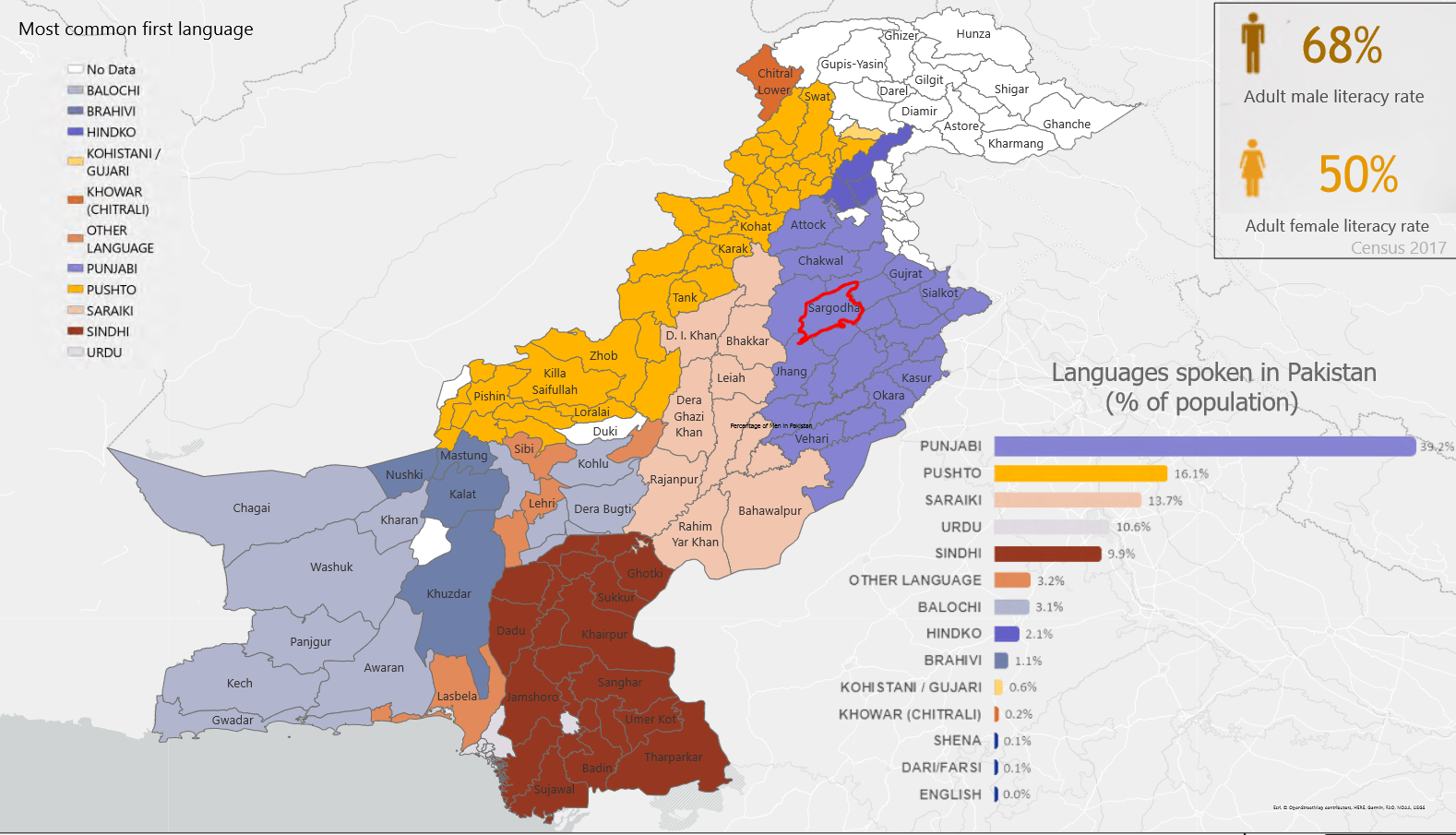
According to the 2024 census data, linguistic diversity in Sargodha reflects the rich tapestry of Pakistan’s cultural heritage. The majority of the population, comprising 94.05%, converses fluently in Punjabi, a language deeply rooted in the region’s history and traditions. Urdu, recognized as Pakistan’s national language, is spoken by 4.33% of the populace, serving as a common medium of communication across diverse communities. Additionally, Pashto, spoken by 1.22% of Sargodha’s residents, represents the cultural mosaic of Pakistan, highlighting the presence of Pashtun communities in the region. This linguistic diversity underscores the inclusive and pluralistic nature of Sargodha’s societal fabric, enriching the cultural tapestry and fostering a spirit of harmony and coexistence among its inhabitants.
 |
| Languages of Sargodha district (2024) |
Culture of Sargodha
The cultural fabric of Sargodha is a captivating fusion of rural traditions and urban influences, showcasing a unique tapestry of values and customs. Rooted in timeless rural values that epitomize the essence of Pakistani culture, Sargodhians have seamlessly integrated modernity into their way of life, propelled by advancements in technology.
Education plays a pivotal role in shaping the ethos of Sargodha, with a high literacy rate contributing to a populace that values knowledge and enlightenment. In the political arena, the electorate of Sargodha exhibits a discerning approach, consistently electing representatives based on their education, integrity, and moral character, irrespective of caste, creed, or party affiliation. This collective commitment to meritocracy underscores the community’s progressive outlook and commitment to building a better future for Pakistan.
Sargodha’s vibrant cultural scene is punctuated by its renowned annual festivities, notably the “Mela Maweshian,” which captivates locals and visitors alike. So ingrained is this celebration in the city’s identity that the Sargodha Cricket Stadium is affectionately referred to as the “Mela Maweshian Ground.”
With six seats in the National Assembly and twelve seats in the Punjab Provincial Assembly, Sargodha holds significant sway in the political landscape of Pakistan. The electorate’s unwavering support for candidates of sound education and ethical standing reflects a broader societal aspiration for good governance and equitable representation.
The cultural ethos of Sargodha serves as a microcosm of Pakistan’s broader aspirations for development and progress. By prioritizing education and fostering a spirit of inclusivity and tolerance, Sargodha exemplifies the potential for positive change and societal advancement. It is through these collective efforts to empower individuals and promote awareness that Pakistan can chart a course toward becoming a truly developed nation.
Administrative Framework
Divisional and District Administration:
Sargodha holds a pivotal position as the capital of Sargodha Tehsil and serves as the epicenter of administrative affairs for its surrounding districts. Following the restoration of the division system in Punjab Province in October 2012, Sargodha ascended to the status of divisional headquarters, overseeing the governance of districts Sargodha, Khushab, Mianwali, and Bhakkar. This elevated role as the administrative capital of the Sargodha Division encompasses a population of approximately 8.1 million residents.
Local Government:
The evolution of local governance in Sargodha mirrors its dynamic growth trajectory. Originally established as the Municipal Committee, the city attained the status of a Municipal Corporation in 1981, spurred by its burgeoning population surpassing half a million. In a significant development in December 2019, the Sargodha Municipal Corporation was further upgraded to Metropolitan Corporation under the Punjab Local Government Act, 2019. The Metropolitan Corporation Sargodha operates under the leadership of the Divisional Commissioner, with the mayoral seat currently vacant.
Development Authorities:
Sargodha is underpinned by robust developmental frameworks aimed at enhancing urban infrastructure and civic amenities. The establishment of the Sargodha Development Authority in 2017, replacing the Sargodha Improvement Trust, underscores the government’s commitment to sustainable urban development. Additionally, the Parks and Horticulture Authority (PHA) diligently maintains the city’s green spaces, while plans are underway for the implementation of the Sargodha Water and Sanitation Agency (WASA) and Sargodha Waste Management Company (SWMC).
Safe City Authority Project:
In a bid to bolster security measures, Sargodha was identified as one of six cities in Punjab slated for improvement under the Punjab Safe Cities Authority. A substantial allocation of 5.5 billion Rupees has been earmarked for the project, designed to replicate the success of the Lahore Safe City project. The initiative entails the installation of 8,000 CCTV cameras throughout the city, facilitating real-time surveillance and monitoring via Integrated Command and Control Centres, bolstering public safety and law enforcement efforts.
Air Base
PAF Base Mushaf (formerly PAF Base Sargodha), situated in Sargodha, Punjab province, Pakistan, stands as a cornerstone of the Pakistan Air Force (PAF) infrastructure. Designated as a “Major Operational Base” (MOB) by the PAF, it embodies the pinnacle of operational readiness and strategic importance.
Originally known as PAF Base Sargodha, the base underwent a poignant transformation in 2003, when it was rechristened in honor of the esteemed former Base Commander and Chief of the Air Staff, Air Chief Marshal Mushaf Ali Mir. This renaming was a tribute to his distinguished service, tragically cut short by the untimely crash of his aircraft near Kohat in February 2003.
PAF Base Mushaf serves as the nerve center for critical PAF operations, housing key institutions such as the Central Air Command (CAC), the Combat Commanders’ School (CCS), and the PAF Airpower Centre of Excellence (PAF ACE). Renowned as the epitome of excellence within the PAF, it boasts the highest caliber of aircraft, squadrons, pilots, and commanders, meticulously trained and equipped to uphold the nation’s aerial defense capabilities.
As the most elite and extensively operational base in Pakistan, PAF Base Mushaf exemplifies unwavering dedication to safeguarding national security interests and maintaining air superiority. Its strategic location and state-of-the-art facilities underscore its indispensable role in ensuring the defense and sovereignty of Pakistan’s airspace.
Sports Scene in Sargodha
Sargodha boasts a vibrant sports culture, with a range of facilities catering to enthusiasts of various disciplines.
Cricket holds a special place in Sargodha’s sporting landscape, with the Sargodha Cricket Stadium serving as a focal point for the game’s aficionados. The city’s cricket team, once a formidable contender in Pakistan’s first-class tournaments, showcased Sargodha’s cricketing prowess on a national stage.
Adjacent to the cricket stadium lies a comprehensive sports complex, offering amenities such as a gymnasium, basketball courts, badminton courts, and table tennis facilities. Karate classes held regularly at the complex contribute to the city’s holistic approach to sports development.
The historic Mela Mandi Ground stands as a testament to Sargodha’s sporting heritage, serving as a versatile venue for cricket and football matches. Constructed to provide a spacious arena for outdoor sports and recreational activities, the ground comes alive during annual competitions held amidst the vibrant backdrop of Pakistan’s spring season.
For aficionados of hockey, the Sargodha Astroturf Hockey Stadium provides a dedicated venue for the city’s hockey enthusiasts. Home to the Sargodha District Hockey Team, the stadium offers a platform for aspiring athletes to hone their skills and showcase their talent.
The Galaxy Sports Complex stands out as a premier sports academy in Sargodha, nurturing young talents across various disciplines and fostering a culture of excellence in sports.
In an exciting development, a flood-lit football ground is currently under construction in Company Bagh, promising to further enrich Sargodha’s sports infrastructure and provide a state-of-the-art facility for football enthusiasts to enjoy the beautiful game under lights.
With its diverse array of sporting facilities and a fervent community of athletes and enthusiasts, Sargodha continues to uphold its reputation as a hub of sporting excellence in Punjab province, Pakistan.
Food and Drink
Traditional Cuisine and Beverages:
Sargodha’s culinary landscape reflects a rich tapestry of flavors, drawing inspiration from the diverse culinary traditions of South Asia and beyond, including influences from the royal kitchens of 16th-century Mughal emperors.
Much like other regions in South Asia, Sargodha’s cuisine is a fusion of British, Indian, Central Asian, and Middle Eastern influences, resulting in a tantalizing array of dishes that appeal to the palate of connoisseurs and enthusiasts alike. Pakistani cooking is characterized by the generous use of spices, herbs, and seasonings, with garlic, ginger, turmeric, red chili, and garam masala lending depth and complexity to the flavors.
At the heart of Sargodha’s culinary heritage is roti, a thin flatbread crafted from wheat flour, serving as a versatile accompaniment to an array of savory dishes, including curry, meat, vegetables, and lentils. Rice also holds a prominent place on the dining table, featuring in various forms such as plain steamed rice, aromatic spiced pilafs, and decadent sweet dishes.
For refreshment, locals indulge in lassi, a traditional yogurt-based drink that offers a cooling respite from the heat of the Punjab region. Additionally, black tea with milk and sugar enjoys widespread popularity, with residents savoring this comforting beverage as a daily ritual.
Fast Food Culture:
In tune with contemporary dining trends, fast food has gained significant traction across Sargodha, catering to the diverse tastes and preferences of its inhabitants. Alongside homegrown fast food joints offering local specialties, the city hosts an array of international fast food outlets, including familiar names like KFC, McDonald’s, Subway, and Pizza Hut. Notably, Sargodha boasts the distinction of housing the world’s largest Gloria Jean’s store, further enhancing its reputation as a culinary destination.
From traditional delights to modern indulgences, Sargodha’s culinary scene is a testament to its cultural richness and culinary innovation, inviting visitors and locals alike to embark on a gastronomic journey through its vibrant streets.
Economic Landscape
Sargodha’s economic vitality revolves predominantly around agriculture, solidifying its reputation as a powerhouse in citrus production, earning it the moniker “California of Pakistan.” Renowned as the largest kinnow-producing district globally, Sargodha boasts a thriving citrus industry, revered for its high-quality oranges supplied nationwide and exported to international markets. In addition to citrus, the region yields substantial quantities of wheat, cotton, rice, and vegetables, serving as vital contributors to the national and global food supply chain.
The industrial sector in Sargodha is also vibrant, with textile mills, rice processing plants, and renowned beverage factories such as Nestle and Shezan enhancing the city’s economic footprint. The Sargodha Chamber of Commerce and Industry plays a pivotal role in monitoring industrial activities, collaborating with governmental bodies to bolster economic growth and development. Furthermore, the ongoing construction of a dry port underscores Sargodha’s commitment to facilitating trade and commerce, positioning it as a strategic logistics hub.
In tandem with industrial growth, Sargodha boasts a burgeoning retail sector, characterized by modern shopping malls and trade centers hosting a blend of international and national brands. Notable establishments such as Mall of Sargodha, Burj Ismail Mall, Xin Mall, and Chenone Tower cater to diverse consumer preferences, amplifying the city’s commercial allure.
Beyond modern retail spaces, Sargodha’s traditional markets, comprising fifteen distinct bazaars, remain vibrant hubs of commercial activity. Each bazaar specializes in particular goods, offering a unique shopping experience:
- Model Bazaar: Featuring a food court, joyland, and a variety of grocery and garment shops.
- Urdu Bazaar: Focused on stationery and books.
- Kachehry Bazaar: Offering bakeries, street food, shoes, garments, and general stores.
- Amin Bazaar: Known for fabrics, boutiques, garments, and electric appliances.
- Muslim Bazaar: Specializing in sanitary items and motorcycle repair services.
- And more, each contributing to the city’s bustling commercial landscape.
From traditional bazaars to modern malls, Sargodha’s economic tapestry weaves together tradition and modernity, underscoring its resilience and adaptability in an ever-evolving economic environment.Top of Form
Awards and Recognition
In a poignant tribute to its indomitable spirit and unwavering resilience, Sargodha, along with Lahore and Sialkot, was bestowed with the prestigious Hilal-e-Istaqlal by the Government of Pakistan in 1966. This esteemed honor was conferred in recognition of the city’s extraordinary valor and steadfast resistance against the enemy during the Indo-Pakistani War of 1965.
As targets of the Indian advance, these cities stood as bastions of fortitude, embodying the unyielding determination and unwavering resolve of their inhabitants in the face of adversity. The awarding of the Hilal-e-Istaqlal serves as a poignant testament to the courage, sacrifice, and unwavering patriotism demonstrated by the people of Sargodha during a tumultuous chapter in Pakistan’s history.
Each year, on Defence Day, observed on 6th September, the Hilal-e-Istaqlal flag is ceremoniously hoisted in Sargodha, Lahore, and Sialkot, serving as a poignant reminder of the valorous deeds and enduring legacy of their citizens. This symbolic gesture pays homage to the resilience, courage, and perseverance displayed by the people of Sargodha, ensuring that their heroic contributions remain etched in the annals of Pakistan’s history for generations to come.
Notable Personalities
- Bakht Singh (1903–2000), prominent Christian leader and church planter, especially in India and Pakistan—born in nearby Joiya village, raised in Sargodha where his father Jawahar Mall owned a factory
- Wazir Agha, Urdu Scholar
- Makhdoom Shahabuddin (journalist), Award-winning journalist and Anchor
- Rafiq Anjum, actor
- Rubina Feroze Bhatti, human rights activist
- Imtiaz Bhatti, former Ambassador / High Commissioner of Pakistan
- Aizaz Cheema, cricketer
- Hameed Gul, former ISI Chief
- Mohammad Hafeez, Cricketer
- Farhat Hashmi, Islamic Scholar
- Chaudhary Ghias Ahmed Mela, politician, PML-Q
- Chaudhry Anwar Ali Cheema, politician, PML-Q
- Feroz Khan Noon, former Prime Minister Pakistan
- Ali Haider Noor Khan Niazi, politician
- Anwer Ali Noon, former Parliamentarian of Pakistan and army Officer
Read Also:
- Different Types of Forests in Pakistan
- List of Airports in Pakistan
- What Tourists Destinations Are Most Famous In Pakistan?
📍 SEO & Content Strategist | Expert in Current Affairs, History, Geography & Education Blogs | Digital Marketing Specialist
Muhammad Talha Mehmood is a seasoned digital marketing specialist, SEO expert, and content strategist with over six years of experience in creating high-impact, research-driven content. As the driving force behind Globaleak.com, he delivers in-depth articles on current affairs, history, geography, and education, helping readers stay informed with accurate, well-researched insights.
🔹 Expertise & Achievements:
✔ SEO & Content Strategy: Specializes in creating authoritative, high-ranking content that aligns with Google’s EEAT guidelines.
✔ Research & Analysis: Covers historical events, geopolitical trends, and educational topics with in-depth research and expert insights.
✔ Proven Track Record: Has successfully worked with global clients, delivering content that enhances brand trust, audience engagement, and search rankings.
✔ Academic Excellence: Holds an MBA in Marketing from IBA, University of the Punjab, and a B.Com (Hons) from Hailey College of Commerce.
✔ Industry Experience: Started his career with Packages Limited, trained under PITB’s E-Rozgar Program, and later became a Team Leader & Trainer at Emenac Group of Companies.
🚀 Passionate about creating impactful content, Muhammad Talha ensures every article is insightful, engaging, and value-driven.
📧 Email: talhamehmood34@gmail.com
🔗 LinkedIn: linkedin.com/in/talhamehmood-34

